Stevie Ray Vaughan defined the sound of contemporary blues guitar – here are 20 techniques you can learn from the Stratocaster master
Get inside the Texas blues icon’s style with this in-depth lesson on his incendiary playing
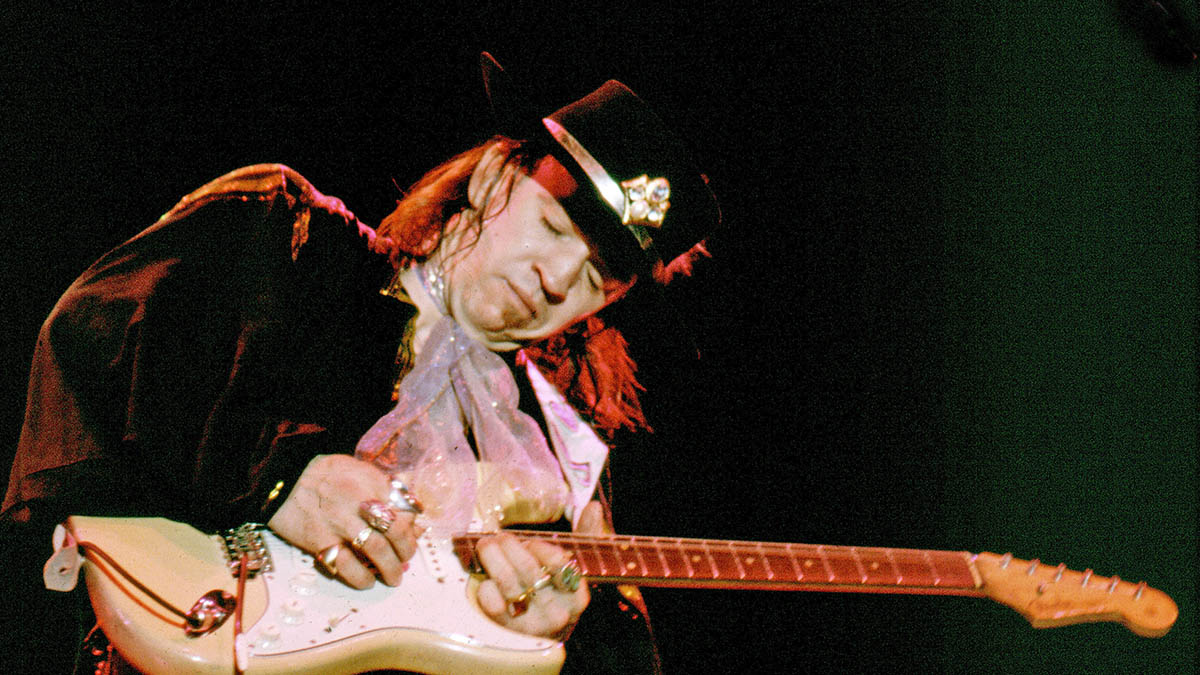
40 years on from his incredible debut release, Texas Flood, Stevie Ray Vaughan’s jaw-dropping recorded works and high-octane live shows continue to inspire guitarists to play blues.
Four decades may have passed, but he can still be considered the archetypal ‘modern’ blues player. Rock ’n’ roll attitude and wicked tone are part and parcel of blues in the 2020s – qualities Stevie had in spades, and at a time when blues had fallen out of fashion. Some call him a pioneer. The bottom line is if you play electric blues today you’ll likely be tracing some of SRV’s line of influence.
Here, we’re looking at 20 ways Stevie played the blues, including a breakdown of some of the techniques he used.
Though not essential, you’ll get the most out of our lessons if you use a guitar equipped with a neck single-coil pickup through a lightly overdriven guitar amp. Keep a Tube Screamer-type drive pedal on hand for a biting lead tone – check out our guide on how to nail Stevie Ray Vaughan’s guitar sound on a budget for more gear tips.
Right, let’s get this house rocking!
Example 1. The 7#9 chord

Our opening example cashes in on the classic Hendrix 7#9 chord. Hear SRV perform his take on it in songs such as Testify and Scuttle Buttin’.
Example 2. First-finger bends

Albert King was a huge influence on Stevie, with the Chicago blues icon’s string bending techniques providing a wealth of expressive phrasing to draw on. Here, we’re using the first finger to bend the first string. It may feel hard to achieve, but that’s sort of the point – you get a certain loose frailty to the slightly shakily performed bend.
Example 3. Blues turnaround leads

Here we’re looking at how SRV navigated blues turnarounds in songs like Texas Flood and Pride And Joy. Here we move with the chords, employing shape one of the B minor pentatonic scale over the B7 before shifting the shape down two frets for A7.
For E7 we’ve used the notes of the chord (E-G#-B), plus a blues hint at the Dorian mode with the two-note shape at the 14th fret.
Example 4. Use a traditional picking technique
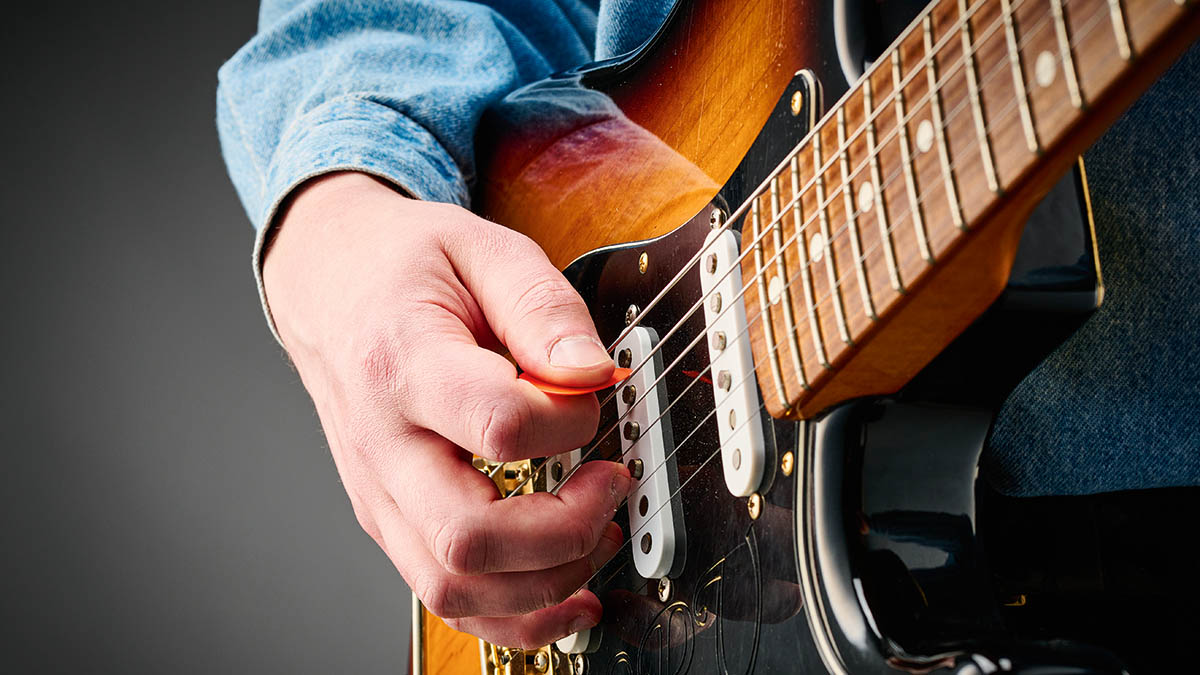
SRV employed a standard pick grip between the thumb and first finger, with a little angle applied as needed. His fingers would be relaxed and fanned out for both strumming and picking and this also put his fingers in the perfect spot for pick-and-fingers style ‘hybrid’ picking. A relaxed grip it may be, but be sure to really dig in and mean every note you play!
Example 5. Hendrix-style embellishments

By adding hammer-ons to doublestops it’s possible to create Hendrix-style chord fills – a typical SRV trick. Our example starts with natural harmonics at the 12th fret and is inspired by tracks like Lenny and, of course, Little Wing.
Example 6. Minor 2nd blues licks

The minor 2nd interval doesn’t appear in the major scale, the natural minor scale or the minor pentatonic scale. So what? Well, it’s a dissonant clashing sound against the root note – hence it’s a staple in metal, but used sparingly elsewhere.
Stevie would often use this colourful tone to add tension to familiar-sounding pentatonics, for example in Mary Had A Little Lamb. Try adding in your own licks!
Example 7. Albert King-style string bends

This one is inspired by SRV’s lead work on his cover of the classic Albert King track The Sky Is Crying. The main aspect here is to concentrate on keeping the string bends in tune with a vocal-like delivery. All the phrases are played in the classic Albert King string bending position.
Example 8. Fret-hand showboating
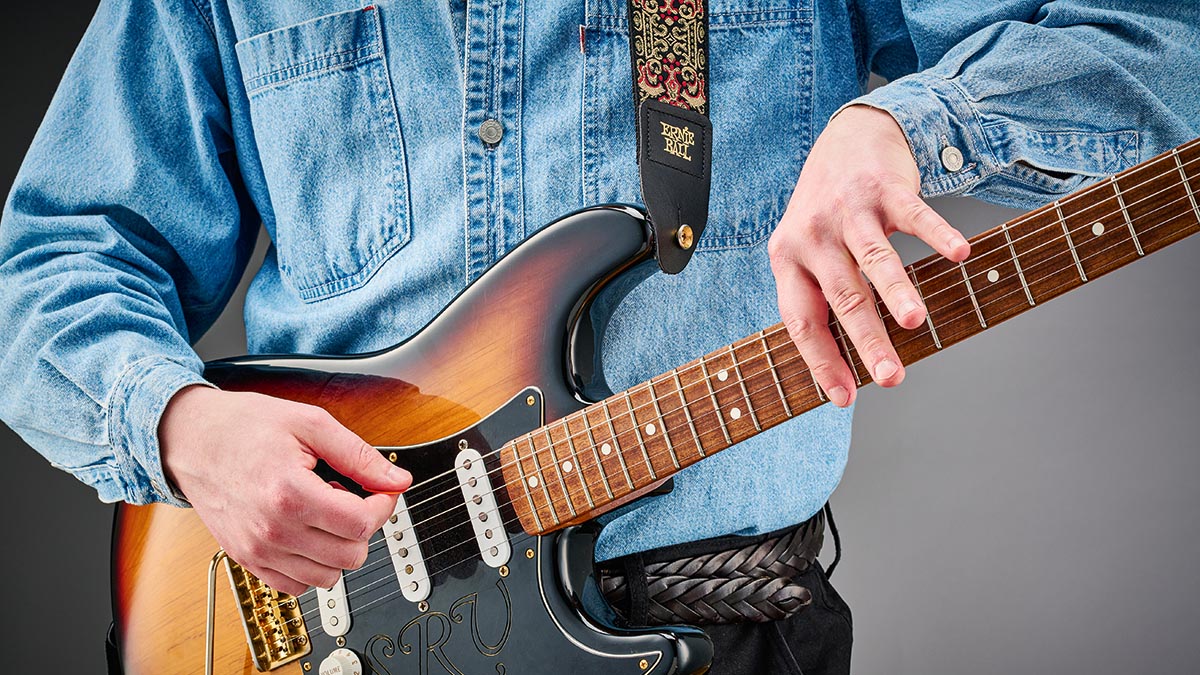
Flair and fire are at the core of Stevie’s legacy – and a generation of blues-rockers arguably owe their careers to his lasting influence. Ape the excitement of SRV’s aggressive blues with this cool trick. Just flip your fret hand over the top of the neck and barre across a few strings or play a two-note pull-off to an open string.
Example 9. Blue-note diads

Bar 1 demonstrates Stevie’s beautiful use of the ‘blue note’ (aka the b5 interval) in diad phrases, for example, around 1:28 in Riviera Paradise. The all-important b5 in our example is the 15th-fret Bb note. Take note of the structure of these diad shapes and how the b5 is enclosed within.
Example 10. Rock ’n’ roll style doublestops

For this example we are using classic rock ’n’ roll doublestops to beef up the sound. This sounds particularly effective in a power trio lineup, and Stevie used it on many tracks, including Love Struck Baby and Empty Arms.
Example 11. Scale playing
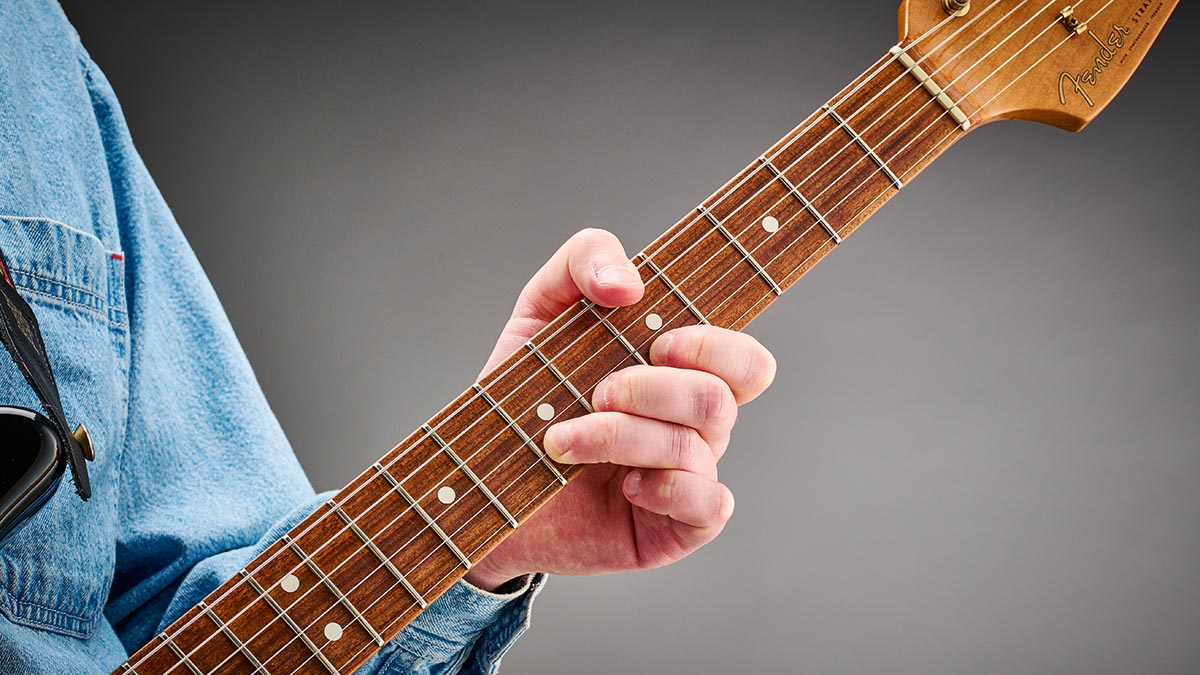
Pentatonics are at the core of Stevie’s scale-based playing. In general, his thumb would be rested on the top of the neck, providing an anchor point for string bends and finger vibrato.
His first, second and third fingers are employed most, but the key element is to keep your hand relaxed, ready to deliver those scorching Texas blues licks.
Example 12. Texas shuffle repeating licks

This three-note lick fits nicely into the triplet feel of the shuffle groove. Repetition might sound like a byword for boring, but it’s a strong improvisational tool, allowing you to hook your listener’s ear before developing the theme or finishing with a flourish. It’s a feature of songs like I’m Cryin’.
Example 13. Fourth finger
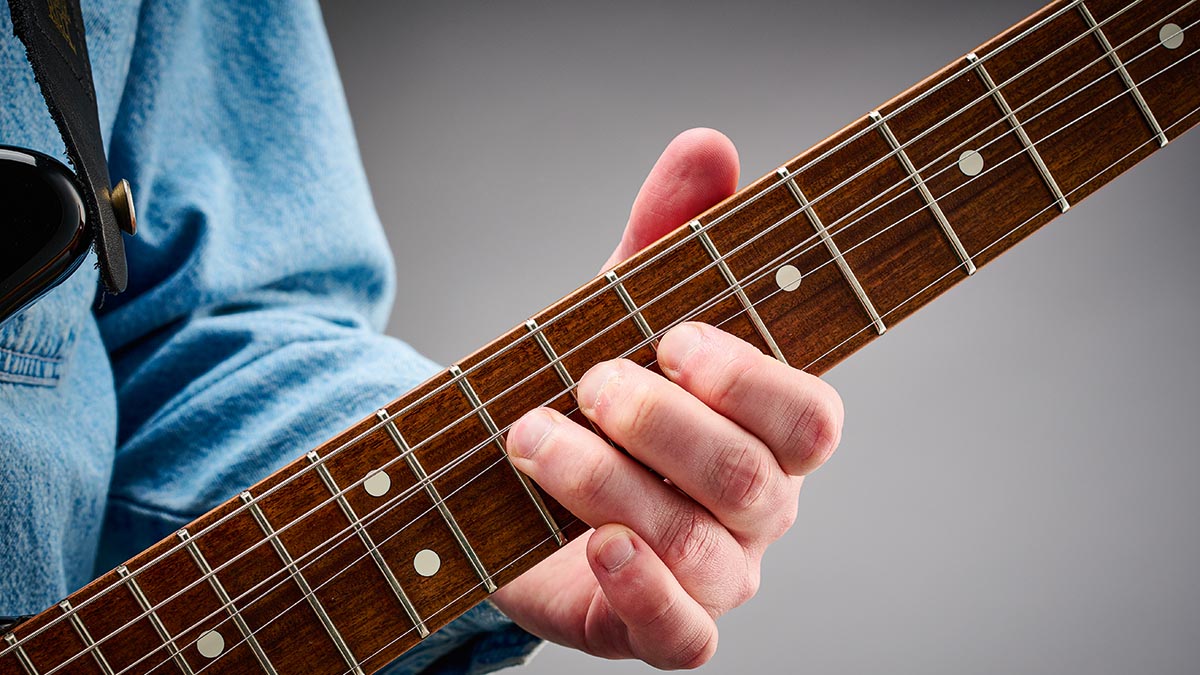
SRV copyists should major on their first, second and third fretting fingers – they’re the strongest digits, perfect for blues phrasing and that trademark vibrato and bending.
Still, don’t neglect your fourth finger. Be ready to place it on the first string, particularly while bending the second or third. Known as an ‘oblique’ bend, you can hear it at 2:25 in Stevie’s version of Little Wing.
Example 14. Funky 16th-note strumming

SRV was a fan of adding in funky strumming to his rhythm parts, and this is key feature of songs like Telephone Song and Couldn’t Stand The Weather. The main aspect to concentrate on is maintaining accuracy when delivering the 16th-note strumming patterns.
Example 15. Shuffle riff mutes

Stevie’s shuffle riffs in Pride And Joy and Cold Shot are the stuff of legend, and these parts both feature one of the Texan ace’s trademark techniques: the pick rake. The idea is to rake across muted strings as you target each single note. Each note is played on the downbeat, with muted strokes on the offbeat.
Example 16. Open strings in fast runs

Including fast flourishes of notes is ear-grabbing, and SRV did this to great effect on tracks like Scuttle Buttin’. Using the open strings makes the fast pull-offs slightly easier to articulate.
Example 17. Thumbed bass notes

Again, the Jimi Hendrix influence shines through as here we’re looking at how Stevie would use his thumb to fret bass notes in barre chords. Simply reach over the top of the neck to fret the notes on the sixth string.
Example 18. Finger vibrato

Here we showcase different ways SRV would employ vibrato. He’d often go for an aggressive touch, so it’s worth really getting to grips with this and digging in with your fretting fingers. Use your first finger on the 12th fret and your third finger for the 15th-fret bend in bar 3.
Example 19. Muted slides

A simple finger slide down the bass strings, this idea is more commonly seen in hard rock, where high-gain tones accentuate the ‘scratchy’ sound of the wound strings.
For our purposes, it’s an extension of SRV’s high-position sliding technique, but also part and parcel of groove and punctuation of his shuffle riff mutes. Playing a shuffle riff? Start with one of these!
Example 20. High-position slides

SRV used this simple idea to add a punctuation point to lead into a more complex lick. Just barre across the top three strings, strum, then slide down. Maintain the pressure as you slide to maintain the ear-grabbing effect.
Get The Pick Newsletter
All the latest guitar news, interviews, lessons, reviews, deals and more, direct to your inbox!
Jon Bishop is a UK-based guitarist and freelance musician, and a longtime contributor to Guitar Techniques and Total Guitar. He's a graduate of the Academy of Contemporary Music in Guildford and is touring and recording guitarist for British rock 'n' roll royalty Shakin’ Stevens.









![Joe Bonamassa [left] wears a deep blue suit and polka-dotted shirt and plays his green refin Strat; the late Irish blues legend Rory Gallagher [right] screams and inflicts some punishment on his heavily worn number one Stratocaster.](https://cdn.mos.cms.futurecdn.net/cw28h7UBcTVfTLs7p7eiLe.jpg)

